After reviewing Nioh 2 I swore I’d never review another Souls-like again. Yet here we are. While I found a lot to like about that game, a few of its design decisions royally got on my nerves. Most of these decisions, thankfully, are not present in Wo Long: Fallen Dynasty, which still has exciting combat, fun weapons, and offers some entertaining spins on Romance of the Three Kingdoms and its (somewhat) historical characters. But it also offers significantly less combat depth than Nioh while falling prey to its clear lack of budget and willingness to force players to fight the same handful of enemies over and over again.
To start with, it is with great joy I tell you that the constant stamina management, Ki Pulses, and the loss of most of your persistent healing every time you move to a new area are all gone. Instead there’s a new stamina system inspired by Sekiro as well as the standard genre healing items. Combat is now based around parries and carefully balancing offense and defense via the spirit system. Basic attacks, running, and jumping don’t use any of your spirit, but using stronger attacks, martial art skills, spells, blocking, dodging, and deflecting do.
This leads to a push and pull feel for the combat. By default, your spirit amount is in the gauge’s dead center. If you hit an enemy with your basic attack or successfully parry an enemy, you gain spirit. If you do any of the things listed as using spirit in the previous paragraph, you lose it. If you have a surplus, the blue part of the gauge fills. A deficit will have the red part fill. If you get hit while the red part is filled all the way up, you enter spirit disruption, which is basically just being stunned. This leads to you using basic attacks and parries to keep spirit high before you use skills and spells on foes.
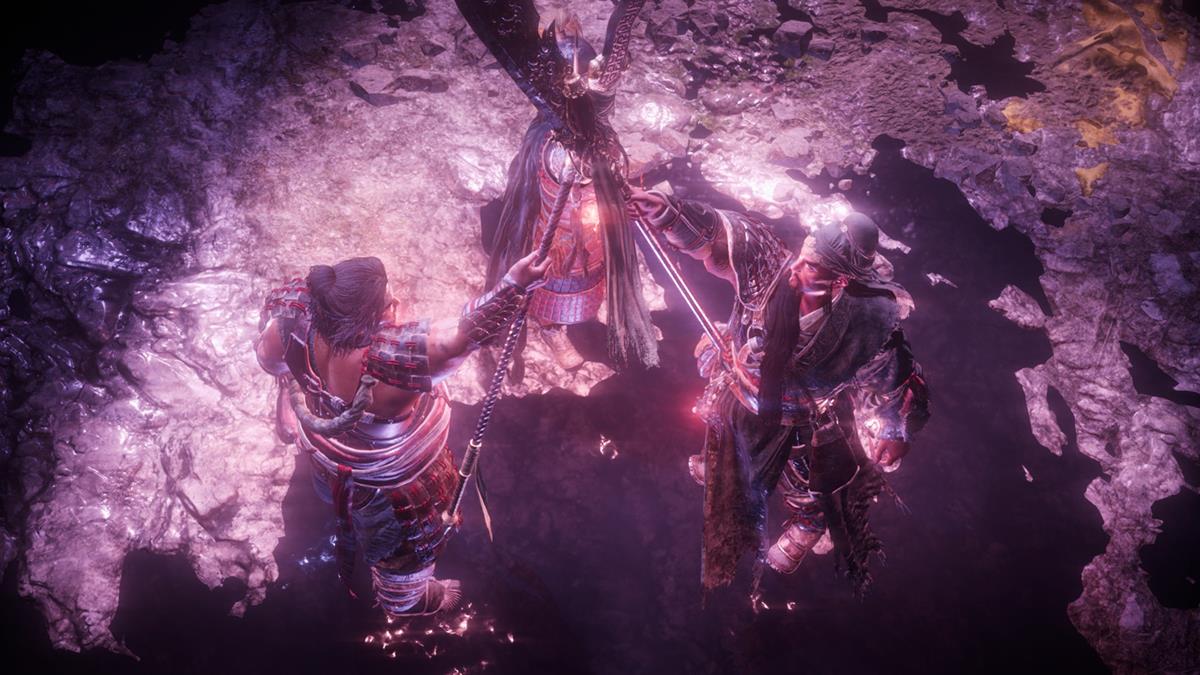
Screenshot by PC Invasion
We’ve got spirit, yes we do
But the same goes for enemies. It’s similar to the posture gauge in Sekiro. You want to attack enemies until they enter spirit disruption, at which point they’ll show a red dot and you can hit them for an animation where you do a large amount of damage (again, like Sekiro). This extends to boss battles, where you’ll often be doing most of your damage by taking advantage of this, as you’ll only chip away at their health with any other attacks.
The combat, as is usual for Team Ninja games, is Wo Long: Fallen Dynasty‘s strongest element. But where Nioh had multiple stances and dense skill trees that offered an enormous amount of depth to the proceedings, Wo Long instead throws this away. Now weapons have skills, called martial arts, attached to them that can’t be removed or applied, unlike any traits the gear may have (extra damage, less spirit consumption, etc). This means you’re completely at the mercy of RNG to determine if you have a weapon with the skills you want.
On one hand, this means that you’re free to switch between weapons as you choose. You can have two equipped and cycle between them and, since they’re so enjoyable to use, I can understand why this was done. But the depth of Nioh‘s combat was the main thing that kept the game compelling. Wo Long: Fallen Dynasty‘s gets staler far earlier. Of course, for every five times you level up, you gain five skill points to allocate to each of the five elemental types. But a lot of these spells are highly similar and, depending on how into magic you are, you may not want to get that much use out of them. But since they’re the only way to change things up, you may find yourself trying them out regardless.
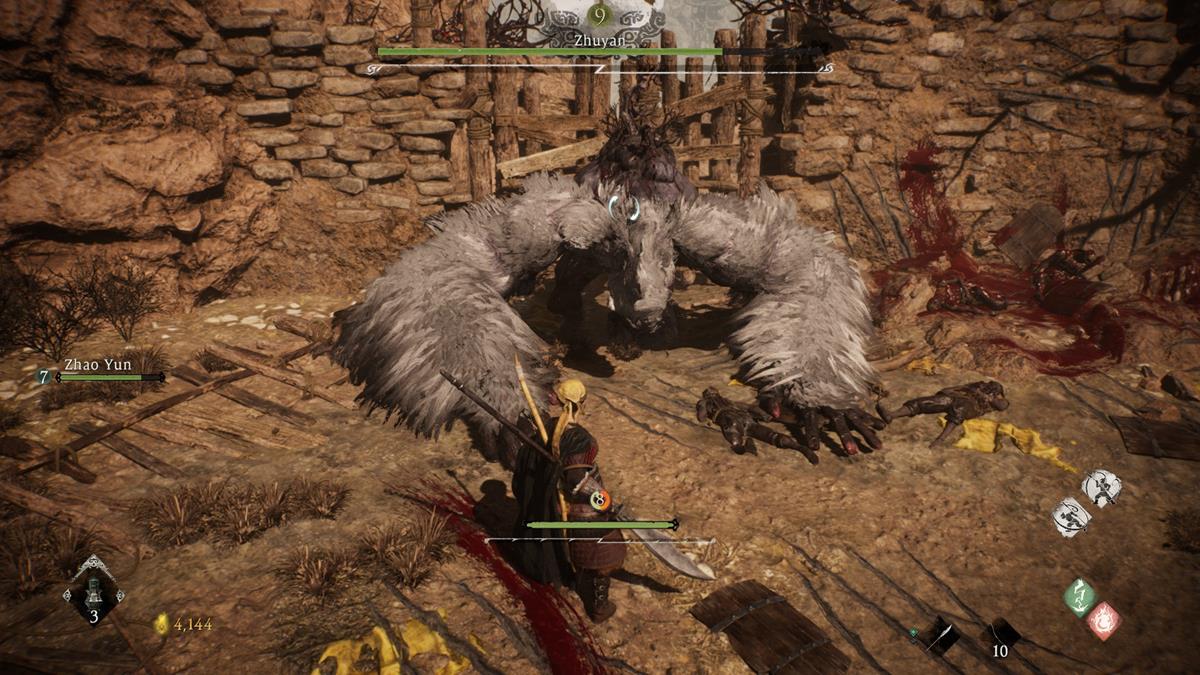
Screenshot by PC Invasion
Not you again
Wo Long: Fallen Dynasty is divided into levels just as the Nioh games were. You pick from a mission to travel to and then you’re dropped at the starting point. The level design here is very similar to those games. The levels themselves aren’t always super memorable, but they get the job done and have enough in the way of exploration that the combat isn’t the sole star of the show.
That’s not to say that they don’t get redundant, however. You’ll reach certain levels and wonder if you’ve been there before, as some of them can look extremely familiar due to some asset reuse, although it’ll take a while before you notice this. But the real issue is the enemies. During the early hours of Wo Long, levels are more exciting as you’ll meet new foes and learn how to deal with them. But it doesn’t take long before new enemies stop appearing and you’re forced to confront the same ones time and again. Again, Nioh is just as guilty of all of this, so it’s not that surprising.
But the lesser depth of the combat means that you’ll be dispatching said enemies in the same way regardless of if you’re in your 10th or 40th hour. Because of this, Wo Long can become notably less interesting after a while. And that’s not the only thing that makes the game less compelling. It’s clear that Team Ninja wants this to be a more accessible adventure, but this isn’t always the case. The difficulty curve ratchets between shockingly easy to being similar to Nioh at the drop of a hat, which makes for a more uneven experience.
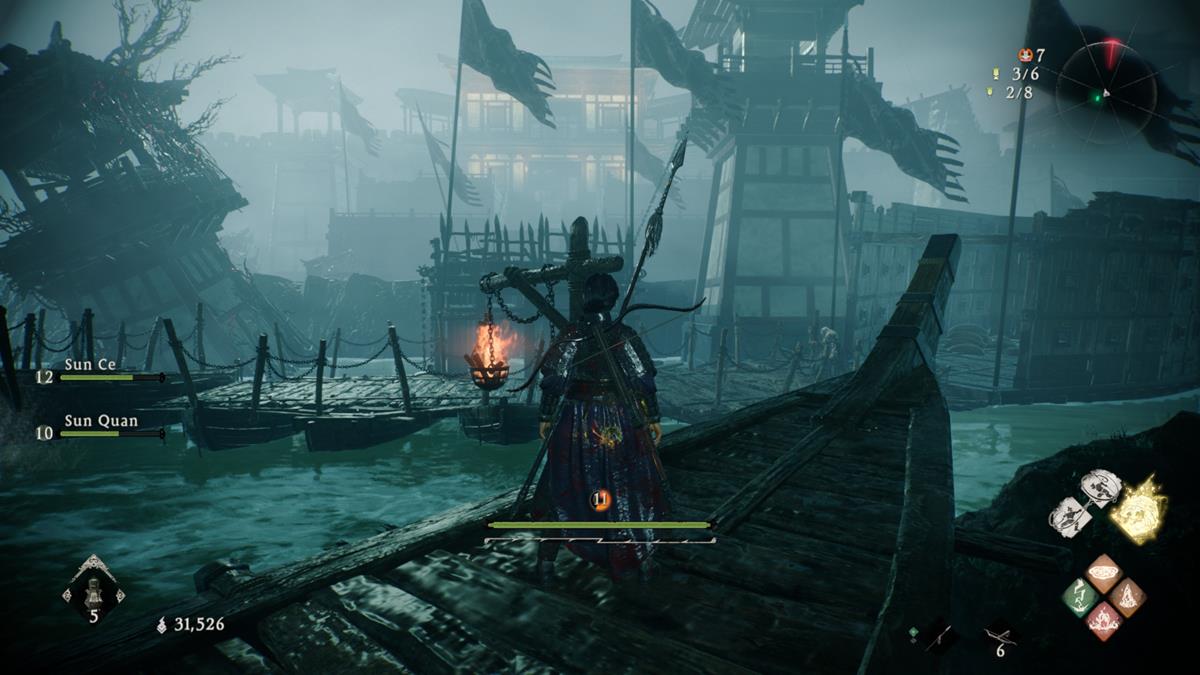
Screenshot by PC Invasion
The art of unbalance
Most levels in Wo Long strap you with one or two AI teammates straight out of Romance of the Three Kingdoms. Lu Bei, Zhao Yun, Cao, Cao, and more will fight by your side throughout the course of the game. But the game doesn’t really compensate for their presence, as you’ll often be wailing on enemies that are attacking your teammates. Levels are often safe and not all that challenging since your compatriots draw so much aggro. Mix this with the low enemy variety and boredom can result. But it’s all so inconsistent. Sometimes levels will have you on your lonesome, which makes things more interesting but it also slaughters any sort of difficulty curve.
Even bosses can be easily beaten in one or two tries due to your helpers. But then there are bosses that can be fiendishly difficult. The game’s opening level is mostly akin to a tutorial, but the second phase of the first boss is a giant difficulty spike. I figured that this was Wo Long announcing that the gloves were off and that things were going to be as tough as you’d expect from Team Ninja, but then the next couple of levels were mostly on the easy side.
The game ratchets back and forth between easy levels with easy bosses to moderately challenging levels with extremely tough bosses. During the campaign, one boss took me a lot of practice to beat and then the ensuing bosses were similarly tough. But then it was right back to beating bosses in one or two goes. Some of the tougher bosses aren’t even all that good, either. One boss tasks you with fighting an enemy who summons a horde of clones. The game uses a similar camera system to other Team Ninja games, so you have to be locked on to attack enemies, which means you’re going to be taking a ton of damage from projectiles and strong enemy attacks with little recourse.
The fight compensates by having these attacks do little damage, but you’ll still be watching as you get stunlocked repeatedly as if no one thought to ameliorate this with a more practical fix. While fighting multiple enemies in the levels, you’ll find yourself parrying one you’re not locked onto who then enters spirit disruption. You then have to manually switch targets to hit them with your strong attack, which is awkward.
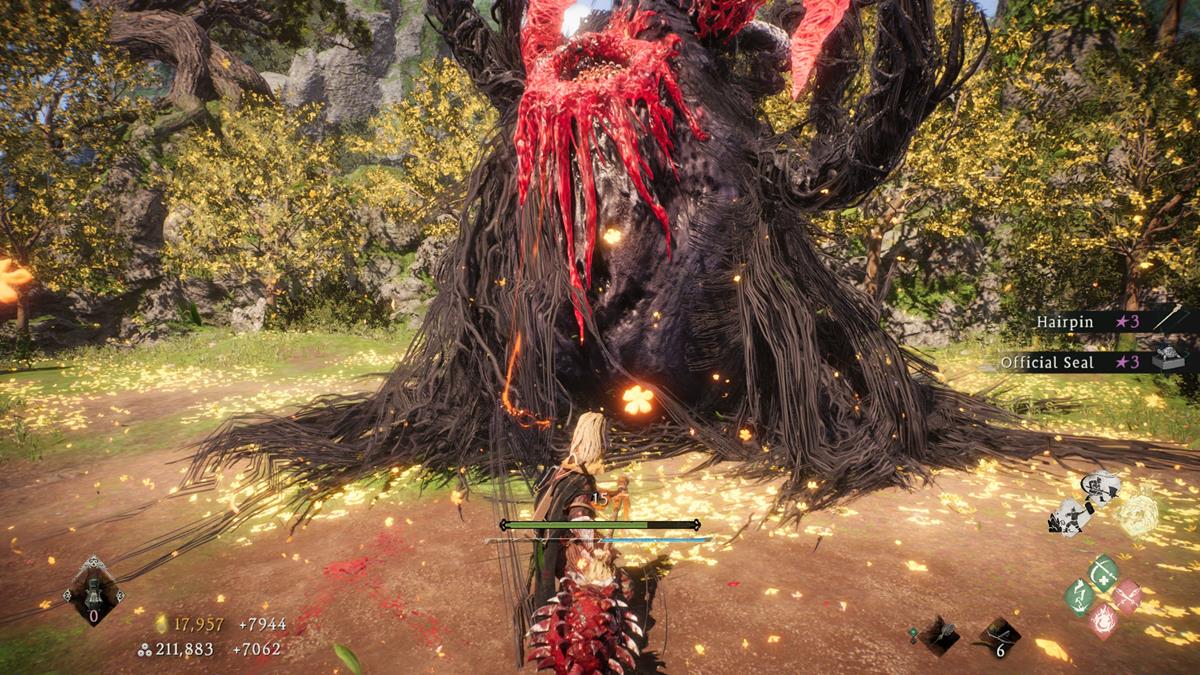
Screenshot by PC Invasion
Can’t see the forest
There are other bosses that are mostly easy to deal with, save for the fact that Team Ninja trots out one of its favorite pieces of artificial difficulty – the instakill grab move. One boss took me a while to beat solely because he kept spamming an instakill grab while he was right in front of me. It’s mostly easy to parry these when enemies have to charge at you, but when they’re right in front of you it can feel borderline impossible to parry. The boss in question used it over and over again too, which I found infuriating. You’re supposed to get right in their faces, so this feels like an oversight.
So does the wonkiness of the camera. I had to avoid fighting bosses near walls, as the camera would just make it impossible to see. This was occasionally a problem in Nioh 2 as well, but I’m just kind of flabbergasted that Team Ninja are still including these problematic elements. Another boss had a horse that ran around the arena in circles. On occasion, he’d get in the way of the camera at the worst times. I do enjoy the Sekiro-style additions, at least, but they don’t always fit. On the good side, you’ve got the fact that strong enemy attacks, called critical blows, can all be parried, which is highly satisfying when you pull it off.
Parrying them will fill up a chunk of the red part of their spirit gauge. But there’s also jumping now. The jumping feels okay, but navigating doesn’t feel all that smooth and is a bit clumsy. There’s “stealth” too, which is unfortunately just the same as in most Souls games and not Sekiro. Enemies have bizarrely bad eyesight and can’t see you when you’re mere feet from them. You can put points into an attribute that makes them detect you more slowly, but if you just hold the block button to keep yourself slow and then jump to move, they won’t be aware of you at all if their back is turned, which feels like an oversight.
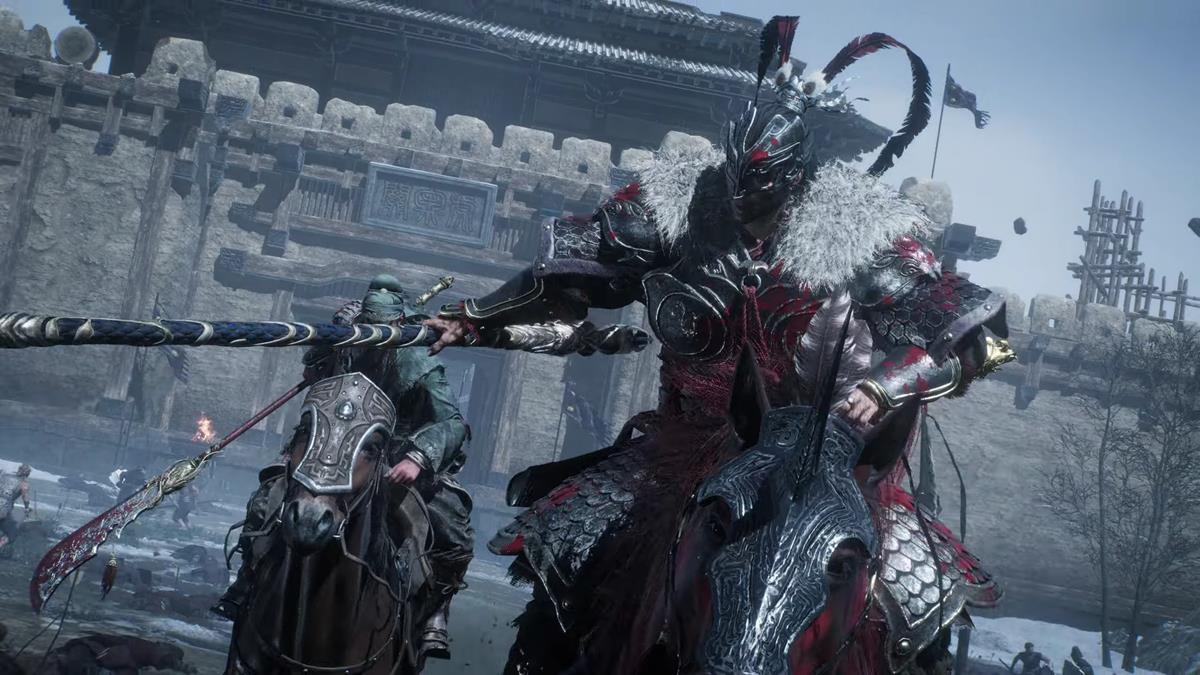
Screenshot by PC Invasion
Grinded up
Other than that, it’s the same game structure as Nioh. You can do side missions and replay main missions to farm for rewards to upgrade your gear, but I mostly never felt like I needed to upgrade anything. I also didn’t feel like the stats I was leveling up really built to much of anything, nor did the game punish me for allocating them based on whims. There’s also a fairly bizarre morale system which forces you to plant flags around a level to become as strong as your foes. I like that this incentivizes exploration, but it does feel like it exists just to add a layer of unnecessary artificial difficulty.
The game doesn’t look particularly good either, with a lot of pop-in and some fairly bland environments. Some areas are very prone to frame drops for no good reason. The optimization just isn’t all that good even though the game’s visuals are fairly dated. However, despite all of my issues with it, I do like Wo Long: Fallen Dynasty. Waiting for openings and parrying enemy strikes leads to lively battles and there’s a lot to do, but the wonky difficulty curve, lack of overall depth, and blatant repetition don’t do the game any favors.
Stay connected with us on social media platform for instant update click here to join our Twitter, & Facebook
We are now on Telegram. Click here to join our channel (@TechiUpdate) and stay updated with the latest Technology headlines.
For all the latest Gaming News Click Here
